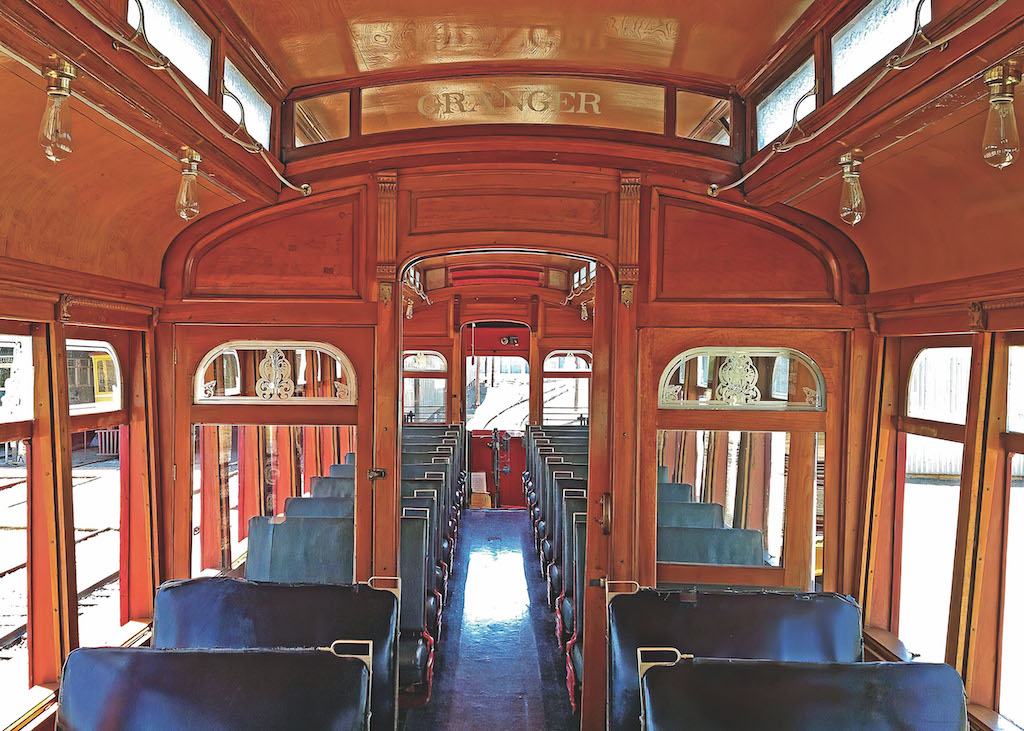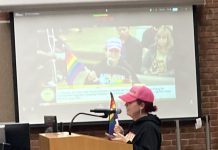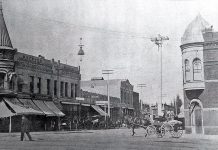
For this week’s Discover LOST Gatos installment, contributor Alan Feinberg digs into the history of public transit…
For as long as I can remember, people have been wondering when (or if) the VTA might extend light rail service to Los Gatos. Imagine how convenient it would be to step aboard a trolley on N. Santa Cruz Avenue and relax in comfort as you travel to Saratoga, San Jose or Palo Alto. It would be a reliable and time-efficient way to commute without worrying about getting stuck in bumper-to-bumper traffic. You could take your family to Alum Rock park on a summer afternoon or explore new restaurants in Palo Alto without the expense and hassle of finding a place to park.
What’s amazing is that you’re not imagining the future, you’re reliving the past!
In the late 19th century, shortly after the advent of electricity, entrepreneurs began developing plans for streetcars which could travel over long distances using electric power. Several private companies applied to Santa Clara County for licenses to operate a rail line powered by overhead wires between San Jose and Los Gatos, mostly via existing roadways. Public sentiment was strongly in favor of a so called “inter-urban” transportation system. Merchants believed that it would foster economic connections and stimulate trade, students thought it would offer easy and reliable transportation to school, and citizens anticipated an inexpensive and convenient way to explore new destinations.

(Alan Feinberg)
After several unsuccessful attempts by competing companies to raise funds and secure rights-of-way, the San Jose-Los Gatos Interurban Railroad began operating in March 1904. The 18-mile line ran down the center of Main Street and North Santa Cruz Avenue then along Saratoga-Los Gatos Road (Highway 9), Saratoga Avenue and Stevens Creek Boulevard before terminating in downtown San Jose. Trains ran hourly at speeds up to 30 mph and a complete trip with multiple stops took 30 minutes. There was also a short extension along Big Basin to Congress Springs.
The streetcar business proved to be extremely profitable. Within five years, three other interurban lines were operating in the valley. At the height of the electric trolley’s popularity in 1915, 126 miles of track crisscrossed the area.
Beyond its practical implications, the interurban railway also had a profound impact on the social dynamics of the communities it served. The newfound sense of regional interconnectedness strengthened ties between neighboring towns which previously had been somewhat isolated.
Compared to the traditional railroad, with huge, lumbering steam-engine-powered locomotives, the little streetcars were a marvel of early 20th century engineering. They were quiet, efficient, and featured innovative safety features such as air brakes. Each car comfortably seated 52 passengers. The interiors were finished in handsome carved cherry wood, with brass trim, electric lights, etched glass sliding doors and genuine leather seats.
In 1910, special trains with observation cars were introduced so that riders could tour the area during springtime when the orchards and wildflowers were in full bloom. Tourists paid the premium rate of $1 to marvel at what became known as “The Valley of Heart’s Delight.”
The trolley ultimately fell victim to the advance of the automobile as roads improved and more people were able to afford the convenience of personal transportation. Ridership declined and the business quickly became unprofitable. Streetcars also became a nuisance when competing with increased automobile traffic, occasionally resulting in accidents. They were ultimately deemed obsolete, and service was discontinued in March 1933 just 30 years after inception, marking the end of a long-forgotten era in the Bay Area’s transportation history.
Alan Feinberg is the founder of the LOST Gatos Project. Our mission is to reignite passion among Los Gatos residents for preserving our town’s unique character and historic treasures before they’re lost forever.









